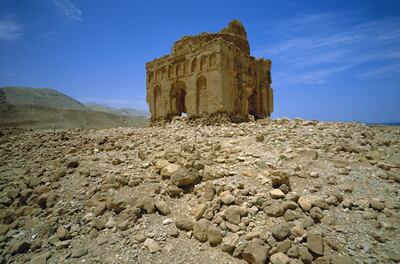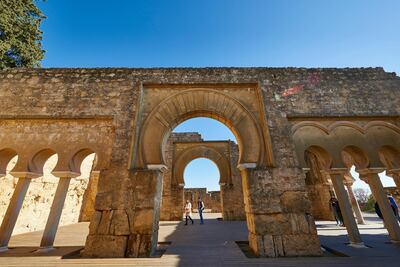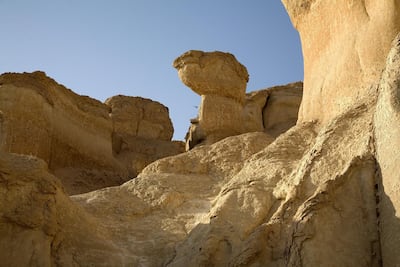Thirty wonders of the modern and ancient worlds are in the running for official recognition by Unesco when the World Heritage Committee meets for the first time in Bahrain this week. Here are five of the sites hoping to make the list:
The Victorian and Art Deco Ensemble of Mumbai
Built during height of British Imperial India, this collection of 19th century and early 20th century buildings frames the city’s Maidan Oval, a recreation ground known for its cricket pitches.
It includes the gothic Bombay High Court, the Fort Campus of the University of Mumbai and the 85-metre Rajabai Clock Tower, designed by the celebrated British architect Sir Gilbert Scott and modelled on Big Ben in London.
Among the newer buildings is the magnificent 1938 Eros Cinema with its gold and marble foyer, and still operating today.
Ancient City of Qalhat
South of Muscat, the city of Qalhat was once a key part of the trade routes of the Indian Ocean, which stretched from what is now Pakistan down to the island Zanzibar.
Ibn Battuta, the great Arab explorer, visited it in the 14th century and described “fine bazaars and one of the most beautiful mosques.” It was also mentioned by Marco Polo. Artefacts from China and ancient Persia have been found on the site.
Once a walled city filled with houses and shops, all that remains today is the dome less mausoleum of Bibi Maryam built around the end of the 13th century. The identity of the Lady Maryam is still unclear.
Caliphate City of Medina Azahara
A vast medieval palace city that was once one of the jewels in the crown of Islamic Spain or Al Andulus, Medina Azahara was pillaged during a civil war over a thousand years ago and fell into ruin.
It is said to have been named after the wife of Abd-ar-Rahman, the first Umayyad Caliph of Cordoba, the city nearby.
Archaeologists began serious excavations in 1910, but to date it is estimated only 10 per cent of the city has been uncovered and restored. They include buildings like the royal reception halls, the house of the prime minister, Yafar and the main offices of state.
Al Ahsa Oasis
In an area of Saudi Arabia rich with natural supplies of water, the Al Ahsa Oasis is said to have over 1.5 million palm trees, making the largest of its kind in the world.
It has been a gateway for trade in the region since ancient times, bridging India to Egypt, Mesopotamia and the Levant.
It contains over 160 springs of hot and cold water and is a popular tourist destination.
Many of its towns and villages still retain old street neighbourhoods and street patterns, while the region remains an important area for agricultural production.
Göbekli Tepe
A tell, or artificial mound, Göbekli Tepe, literally translates from Turkish as “potbelly hill,”
Located in south eastern Anatolia, it is thought to date back possibly 12,000 years as a place of rituals and social gathering.
Three layers have been uncovered, the earliest constructed with limestone pillars in circular structures cut from pits 100 metres away.
The second layer features carvings of lions, while the uppermost layer consists of the ruins of buildings, mixed with stone tools and animal bones.
Built by hunter gatherers, there is no evidence the people lived there, with experts now speculating it was a place of pilgrimage.






